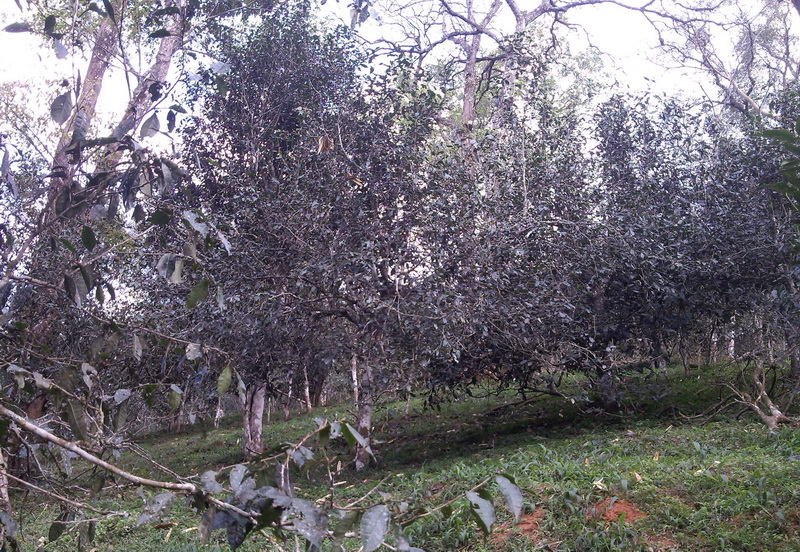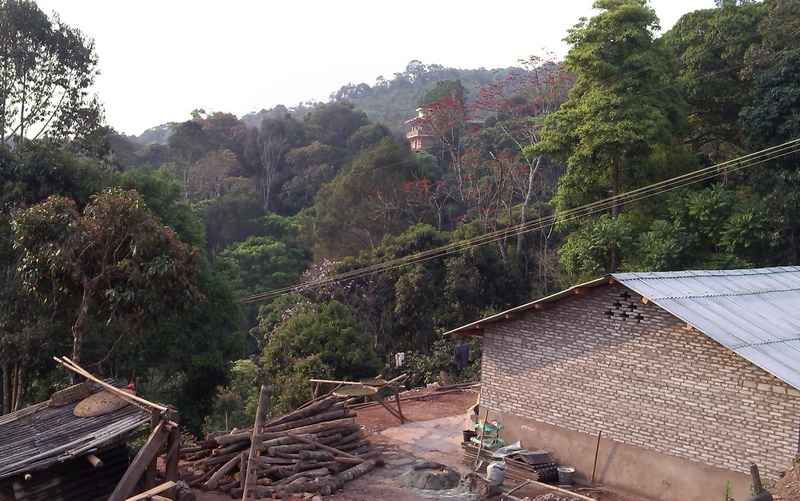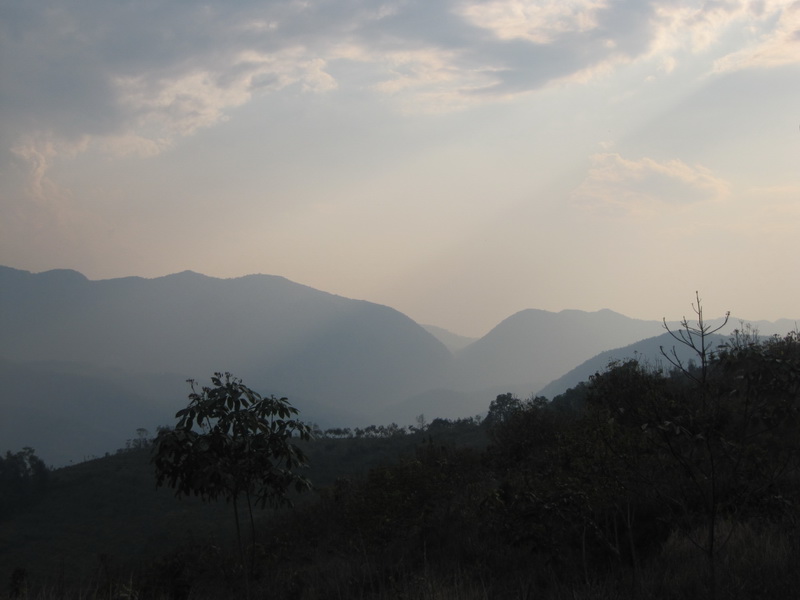I was around Ge Deng somewhere drinking tea with Chen Lao Ban (Guangdong Chen) when a tea farmer brought a bag of tea he had made for him. Chen Lao Ban makes his own tea and also has some local people make tea. There wasn’t much, no more than three kilos. He looked in the bag, looked up and asked “Where are the huang pian?” “You complained about them last year” the farmer said, “so this year I took them out.” Chen Lao Ban, looked up, shaking his head in disbelief, but said nothing.
Such is the story of huang pian, or yellow leaves, sometimes called ‘lao huang pian’.
As indicated in the previous post on the causes of bitterness and sweetness in tea, it is the older leaves that are sweeter.
Tea farmers: Aini, Bulang, Jinuo, etc, would not traditionally use young leaves to drink themselves. They use the sweeter ‘lao ye’, which they brew up in a kettle – traditionally in a bamboo tube – maybe having baked the leaves first.
For them, younger leaves, and all the tea brewing paraphernalia, is a Han Chinese thing which is alien to them. Many a tea farmer will tell you that when they were young, they never had a gaiwan or bowls. It is something they have now, rather as part and parcel of doing business.
If tea is growing quickly, the leaves, even including the fourth leaf are supple, pliable, and will not produce huang pian. When tea is growing more slowly, or has been left longer before picking, the lower leaves become less pliable, and if they are picked, will make huang pian. These leaves will not be made more supple by time or the frying processes, and remain un-rollable.
Ideas about huang pian in Puer tea change. From an appearance point of view, they are less desirable, but from a flavour point of view they are fine, and in small number, will not be detremental to the flavour; bringing a little extra sweetness.
The practice of picking them out is to please the customer who is primarily concerned with appearance. In Spring tea there should never be many. Autumn tea has more, and summer tea the most.
If the tea leaves are picked well and there are are few huang pian, the farmer can pick most of them out when they are firing the tea. When there are more, the laboriuos job of picking them out of the mao cha has to be done. The benefit is that they then become a ‘product’ in their own right.
Too many huang pian will lower the value of the tea, but most tea producers are happy to see some in their mao cha, which they can then decide to leave in or pick out and sell separately.





